|
January 2004 –
January 04 –
“The Quadrantids Meteor Shower”
visible –
Mid-Northern Latitudes
time –
Maximum –
04:50 UT
(GMT)
January 07 –
“Full Moon”
February 2004 –
February 06 –
“Full Moon”
February 09 –
“Asteroid 2003/YK118 will miss Earth by 33 LD today – Mag. 15”
February 16 –
“Comet C/2002 T7 spotted near Venus, close to Algenib”
visible –
Mid-Northern Latitudes
February 16 –
“Asteroid 2004/AS1 will miss Earth by 33 LD today – Mag. 17”
February 27 –
“Two simultaneous ‘naked-eye’ comets expected April/May”
visible –
Mid-Northern Latitudes
March 2004 –
March 01 –
“Skywatch: Our planetary neighbors out for all to see”
March 01 –
“Asteroid 2003/YM137 will miss Earth by 37 LD today – Mag. 17”
March 04 –
“Jupiter at closest approach to Earth today”
March 06 –
“Full Moon” –
watch out for ‘Moon Halo’s tonight
March 18 –
“Asteroid 2004 FH missed Earth by 0.125 LD today – Mag. 10”
March 19 –
“Viewer’s Guide: Spot a Comet from Your Backyard”
March 20 –
“Alban Eilir -Vernal Equinox – at 06:42 UT”
March 22 –
“A Gathering of Planets – after dark, early skywatch”
March 23 –
“Planetary parade for sky watchers”
March 27 –
“Asteroid 2004 FY15 will miss Earth by 0.6 LD today – Mag. 14”
March 27 –
“Five ‘Naked-Eye’ Planets to Adorn Evening Skies”
March 28 –
“Venus farthest from sun in 8-year cycle”
April 2004 –
April 2004 –
“Sky Maps & Observing Notes for the Northern Hemisphere”
April 2004 –
“Sky Maps & Observing Notes for the Southern Hemisphere”
April 04 –
“Asteroid 2001 HB will miss Earth by 36 LD today – Mag. 19”
April 05 –
“Full Moon”
April 13 –
“William Bradfield Finds Another Bright Comet – C/2004 F4”
April 17 –
“Comet C/2004 F4 (Bradfield) at closest approach today”
April 19 –
“Partial Solar Eclipse”
visible –
Antarctica, southern Africa and Madagascar
time –
13:34 UT
(GMT)
April 20 –
“Asteroid 1999 DJ4 will miss Earth by 23 LD today – Mag. 19”
April 22 –
“Comet Bradfield emerges from perihelion – SOHO images”
April 22 –
“The Lyrids Meteor Shower will peak between 02:00 and 04:00”
visible –
Mid-Northern Latitudes
time –
Maximum –
02:45 UT
(GMT)
April 22 –
“Comet C/2004 F4 Bradfield Orbital Elements – Ephemerides”
April 24 –
“Comet C/2004 F4 Bradfield & Comet C/2002 T7 Linear – sky map”
April 26 –
“Three ‘Naked Eye’ Comets to Streak Into View Within Days”
April 30 –
“Asteroid 2003 YT1 will miss Earth by 29 LD today – Mag. 14”
May 2004 –
May 02 –
“Brilliant pair of comets heads our way”
May 04 –
“Full Moon”
May 04 –
“Total Lunar Eclipse”
visible –
Asia, South America, Europe and Africa
time –
19:00 to 21:00 UT
(GMT)
May 05 –
“Eta Aquarids Meteor Shower”
visible –
Mid-Northern Latitudes
time –
Maximum –
16:25 UT
(GMT)
May 08 –
“Asteroid 2001 US16 will miss Earth by 11 LD today – Mag. 15”
May 09 –
“Comet C/2001 Q4 NEAT SkyMap – after sunset May 9th 2004”
May 10 –
“Comet C/2001 Q4 NEAT SkyMap – after sunset May 10th 2004”
May 11 –
“Comet C/2001 Q4 NEAT SkyMap – after sunset May 11th 2004”
May 12 –
“Asteroid 2004 HC39 will miss Earth by 13 LD today – Mag. 17”
May 14 –
“Comet C/2001 Q4 NEAT SkyMap – after sunset May 14th 2004”
May 15 –
“Comet C/2001 Q4 NEAT SkyMap – after sunset May 15th 2004”
May 17 –
“Comet C/2001 Q4 NEAT SkyMap – after sunset May 17th 2004”
May 18 –
“Comet C/2001 Q4 NEAT SkyMap – after sunset May 18th 2004”
May 23 – 26 –
“Comet C/2001 Q4 NEAT at perihelion”
visible –
North America, South America, Europe, Asia and Africa
May 24 –
“Asteroid 2004 FJ11 will miss Earth by 12 LD today – Mag. 11”
May 25 –
“Close-up view of Comet NEAT”
May 26 –
“Eclipse of the century”
June 2004 –
June 01 –
“Asteroid 2004 KE17 will miss Earth by 25 LD today – Mag. 18”
June 03 –
“Full Moon”
June 06 –
“Asteroid 2004 KH17 will miss Earth by 24 LD today – Mag. 17”
June 08 –
“Safe Sunwatching Techniques – Binoculars”
June 08 –
“Safe Sunwatching Techniques – Telescopes”
June 08 –
“Venus transits the Sun – as seen from Earth”
visible –
Asia, South America, Europe
time –
08:19 UT
(GMT)
June 08 –
“European Southern Observatory; The Transit of Venus”
June 08 –
“Transit of Venus – Live Webcast from Australia”
June 08 –
“Transit of Venus – Live Webcast from Brazil”
June 08 –
“Transit of Venus – Live Webcast from the Canary Islands”
June 08 –
“Transit of Venus – Live Webcast from Denmark”
June 08 –
“Transit of Venus – Live Webcast from France”
June 08 –
“Transit of Venus – Live Webcast from Greece”
June 08 –
“Transit of Venus – Live Webcast from Hong Kong”
June 08 –
“Transit of Venus – Live Webcast from India”
June 08 –
“Transit of Venus – Live Webcast from Iran”
June 08 –
“Transit of Venus – Live Webcast from Macao”
June 08 –
“Transit of Venus – Live Webcast from the Netherlands”
June 08 –
“Transit of Venus – Live Webcast from the Norway”
June 08 –
“Transit of Venus – Live Webcast from the Portugal”
June 08 –
“Transit of Venus – Live Webcast from the Reunion”
June 08 –
“Transit of Venus – Live Webcast from South Africa”
June 08 –
“Transit of Venus – Live Webcast from Sweden”
June 10 –
“Asteroid 2004 MD will miss Earth by 9 LD today – Mag. 14”
June 13 –
“Asteroid 2004 MD6 will miss Earth by 29 LD today – Mag. 17”
June 15/16 –
“June Lyrids Meteor Shower”
visible –
Mid-Northern Latitudes
time –
Maximum –
02:15 UT
(GMT)
June 18 –
“Asteroid 2004 LY5 will miss Earth by 25 LD today – Mag. 18”
June 18 –
“Surprise meteor shower possible in June”
June 19 –
“Asteroid 2004 LC2 will miss Earth by 30 LD today – Mag. 16”
June 25 –
“The 2004 Perseid Meteor Shower”
June 26 –
“Asteroid 1998 SF36 will miss Earth by 5 LD today – Mag. 13”
July 2004 –
July 2004 –
“July 2004 – Sky Maps & Observing Notes – N. Hemisphere”
July 2004 –
“July 2004 – Sky Maps & Observing Notes – S. Hemisphere”
July 02 –
“Full Moon”
July 08 –
“Free Hubble home software now available”
July 09 –
“Unexpected Meteor Show Over North Texas”
July 09 –
“Fireworks for stargazers – in Southern Hemisphere”
July 09 –
“Blue Moon on July 31”
July 11 –
“Asteroid 1999 MN will miss Earth by 8 LD today – Mag. 16”
July 14 –
“Asteroid 2001 OY13 will miss Earth by 25 LD today – Mag. 16”
July 25 –
“Asteroid 2000 PH5 will miss Earth by 5 LD today – Mag. 17”
July 28/29 –
“The Southern Delta Aquarids Meteor Shower”
visible –
Mid-Northern Latitudes
time –
Maximum –
02:00 UT
(GMT)
July 31 –
“Full Moon”
August 2004 –
August 11 –
“New Perseid Meteor Peak From New Filament?”
August 12 –
“The Annual Perseids Meteor Shower”
visible –
Mid-Northern Latitudes
time –
Maximum
09:20 UT
(GMT)
August 29 –
“Full Moon”
September 2004 –
September 09 –
“Asteroid 2003 UX34 will miss Earth by 22 LD today – Mag. 18”
September 10 –
“Asteroid 2004 JA27 will miss Earth by 23 LD today – Mag. 19”
September 14 –
“Asteroid 1998 OX4 will miss Earth by 25 LD today – Mag. 18”
September 28 –
“Full Moon”
September 29 –
“Asteroid 4179 Toutatis will miss Earth by 4 LD today – Mag. 9”
October 2004 –
October 13/14 –
“Tips for viewing today’s solar eclipse”
October 14 –
“Partial Solar Eclipse”
visible –
Alaska, Northeast Russia, China, Japan
time –
02:59 UT
(GMT)
October 17 –
“Night skies to light up”
October 21 –
“The Orionids Meteor Shower”
visible –
Mid-Northern Latitudes
time –
Maximum
01:30 UT
(GMT)
October 22 –
“Meteor shower lights up night sky”
October 27 –
“Full Moon”
October 27/28 –
“Lunar Eclipse – Live Webcast from the Canary Islands”
October 27/28 –
“Lunar Eclipse – Live Webcast from Iran”
October 27/28 –
“Lunar Eclipse – Live Webcast from Mexico”
October 27/28 –
“Lunar Eclipse – Live Webcast from Italy”
October 28 –
“Total Lunar Eclipse”
visible –
North America, South America, Europe, Asia and Africa
time –
03:04 UT
(GMT)
October 31 –
“November sky holds a galaxy of delights”
November 2004 –
November 02 –
“Asteroid 2004 TP1 will miss Earth by 13 LD today – Mag. 15”
November 02 –
“Asteroid 2004 UE will miss Earth by 10 LD today – Mag. 15”
November 12 –
“New Moon”
November 12 –
“Leonid Meteor Shower Peaks Next Friday”
November 13 –
“Leonid Meteor Shower 2004: Modest Peak Expected Nov 16-19”
November 17/19 –
“The Leonids Meteor Shower”
visible –
Mid-Northern Latitudes
time –
Maximum –
07:30 UT
(GMT)
November 26 –
“Full Moon”
November 27 –
“A Planetary Panorama To Unfurl in December Skies”
December 2004 –
December 02 –
“Something is missing from the night sky”
December 07 –
“New Comet Now Visible to Naked Eye”
December 08 –
“Asteroid 2004 RZ164 will miss Earth by 7 LD today – Mag. 12”
December 10 –
“Comet Machholz (C/2004 Q2) – skymap mid-December 2004”
December 10 –
“Comet Machholz (C/2004 Q2) – Daily Ephemeris”
December 13 –
“Watch the Geminida & Comet Machholtz tonite”
December 13 –
“The Geminids Meteor Shower”
visible –
Mid-Northern Latitudes
time –
Maximum
20:45 UT
(GMT)
December 24 –
“Asteroid 2004 VW14 will miss Earth by 5 LD today – Mag. 13”
December 22 –
“C/2004 Q2 (Machholz) Orbital Diagrams”
December 22 –
“C/2004 Q2 (Machholz) Finder Charts”
December 24 –
“2004: The year in space and astronomy”
December 26 –
“Full Moon”
December 29 –
“Asteroid 2004 MN4 has slim chance of Earth hit”
|
“Light Pollution:
Strategies and
Solutions (Patrick
Moore’s Practical
Astronomy S.)”
Bob Mizon
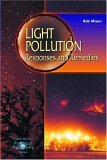
“Light-pollution is the modern scourge of optical astronomy. More and more observing sites are being lost as the glare of city lighting blots out the night sky. Professional astronomical observatories are located far from cities, but amateur astronomers often do not have this luxury.
This book considers the two available strategies open to astronomers – get rid of the light pollution by lobbying authorities and standards organisations, and minimize its effects by using the correct instrumentation.
Get This Book From:
Amazon.com
Amazon.co.uk
Celestron AC Adapter for All Nexstar Telescopes
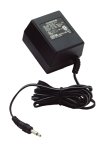
Celestron Sky Maps with Planisphere
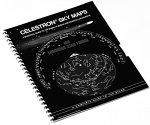
Meade ETX70AT Telescope
(with 882 Tripod and Software)
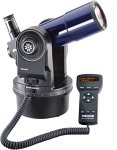
Meade Telescopes & Binoculars
FEATURES:
* Exclusive multicoated, air-spaced achromatic objective lenses
* Razor-sharp images of both astronomical and terrestrial subjects
* Extremely portable at only 6.8 pounds
*Telescope can be used on any flat surface
* Meade 882 tripod included
“How to Use a Computerized Telescope”
Michael A. Covington
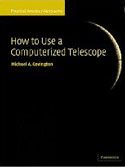
EU English Edition
“Using the Meade Etx: 100 Objects You Can Really See With the Mighty Etx”
Mike Weasner
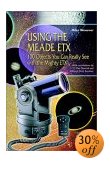
EU English Edition
Meade ETX125EC Telescope
(with UHTC, Autostar Controller (497) and Tripod (884)

Meade Telescopes
FEATURES:
* Includes AutoStar controller and deluxe field tripod
* UHTC coatings are on all optical surfaces for enhanced detail
* 500x maximum magnification
*Maksutov meniscus corrector lens of Grade-A BK7 optical glass
* Includes a Meade Series 4000 Super Plvssl 26 millimeter eyepiece for 48 times magnification
Celestron Firstscope 114EQ
(114mm Reflector Telescope)

Celestron Telescopes
FEATURES:
* Manual slow-motion controls
* Newtonian reflector optics
* 900mm focal length
*Comes with adjustable aluminum tripod
* 227.5x maximum magnification
“Comets”
Melanie Chrismer
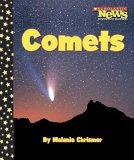
EU English Edition
“The Cambridge Guide to the Solar System”
Kenneth R. Lang
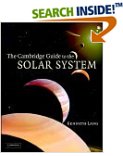
EU English Edition
“An Introduction to the
Solar System”
Neil McBride (Editor)
&
Iain Gilmour (Editor)
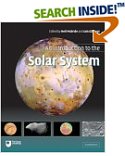
EU English Edition
“Comets and Asteroids”
Don Nardo
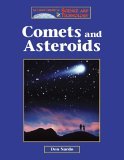
Get This Book From:
Amazon.com
Amazon.co.uk
“Observing Comets, Asteroids, Meteors and the Zodiacal Light”
Stephen J. Edberg
&
David H. Levy
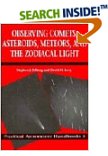
EU English Edition
|















